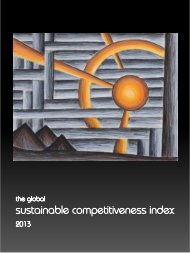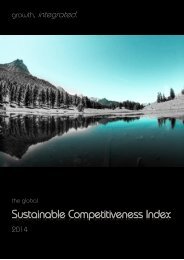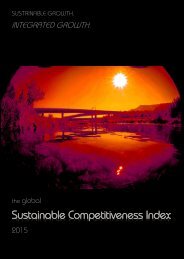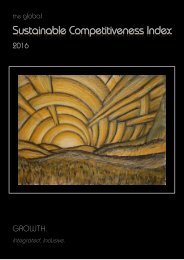The Global Sustainable Competitiveness Index 2019
Measuring competitiveness comprehensively: Sweden & Scandinavia tops, Germany #15, UK 17, US 34, China 37 in the Global Sustainable COmpetitiveness Index 2019
Measuring competitiveness comprehensively:
Sweden & Scandinavia tops, Germany #15, UK 17, US 34, China 37 in the Global Sustainable COmpetitiveness Index 2019
You also want an ePaper? Increase the reach of your titles
YUMPU automatically turns print PDFs into web optimized ePapers that Google loves.
Sustainable Competitive
Table of
Contents
In a sustainable efficient entity, powers are balanced. Imbalance in power
between individuals, groups, and entities always lead to lower efficiency over
time. Low efficiency means higher overall cost, less benefits. What might appear
competitive now (e.g. the exploitation of natural non-renewable resources), but
is not into the future, is not competitive. Competitiveness that is not sustainable is
not competitive.
In a sustainable entity, the economy does not run against nature and/or
communities/society. All dimensions of an entity are all running in parallel in winwin
interactions. The fundamentals hat make an economy, a society, and the
natural environment in which both of the above operate/live in, are balanced
interacting:
The Sustainable Competitiveness Framework:
Sustainable competitiveness only requires two fundamentals as its base:
• Equal opportunities, everywhere
• Decision-making based on science and sustainable cost-benefit analysis
that lead to low-cost, high-benefit solutions (LCHBs)
27








